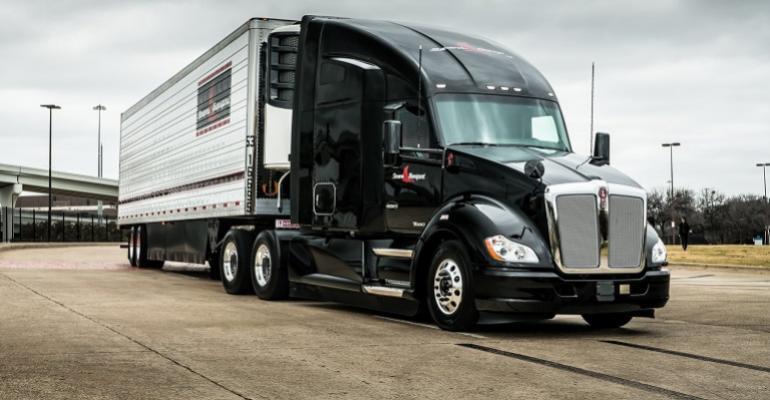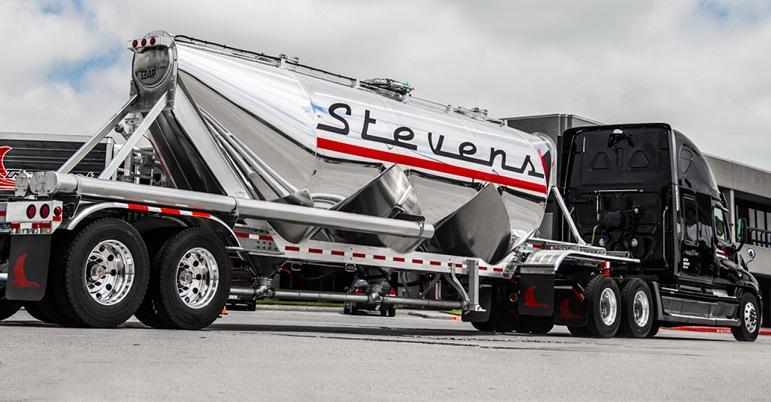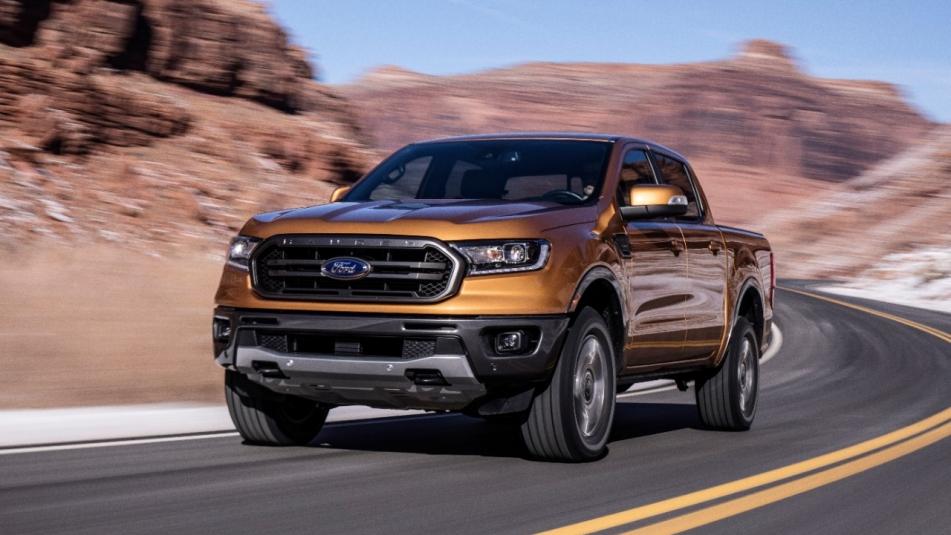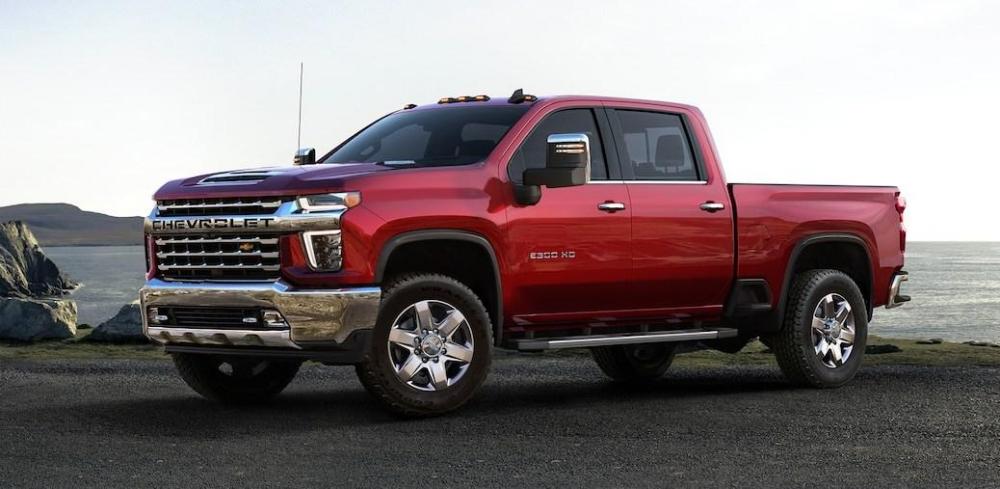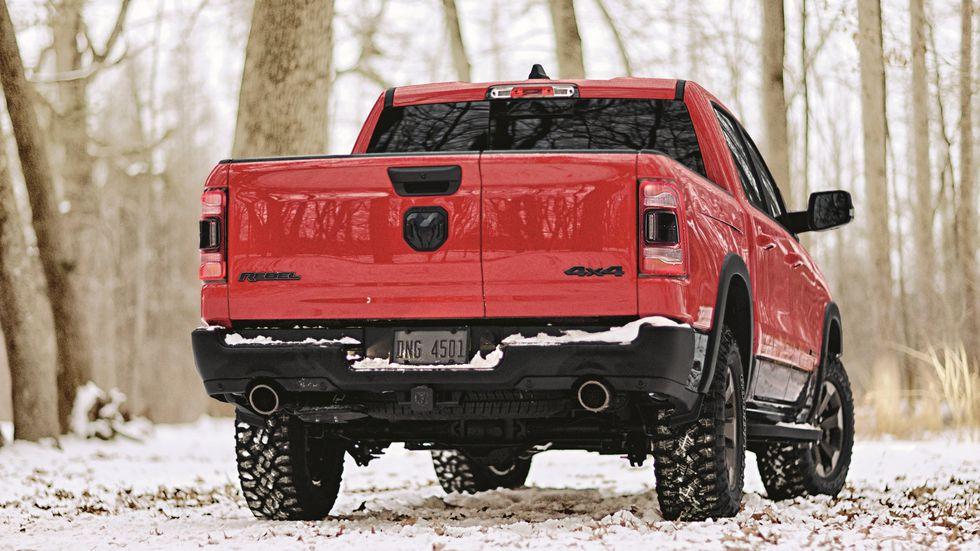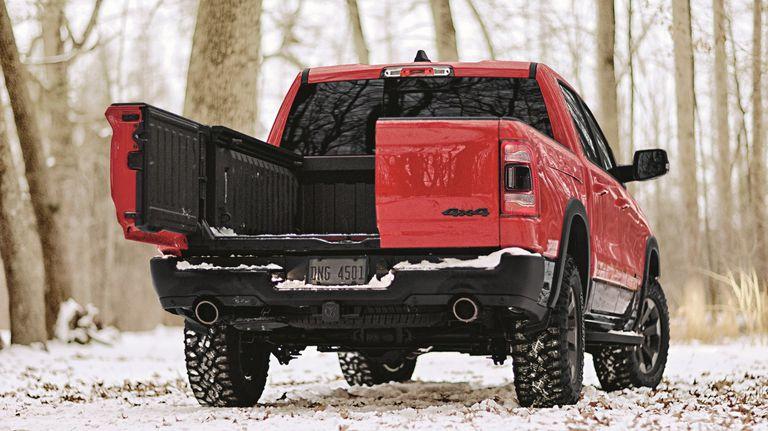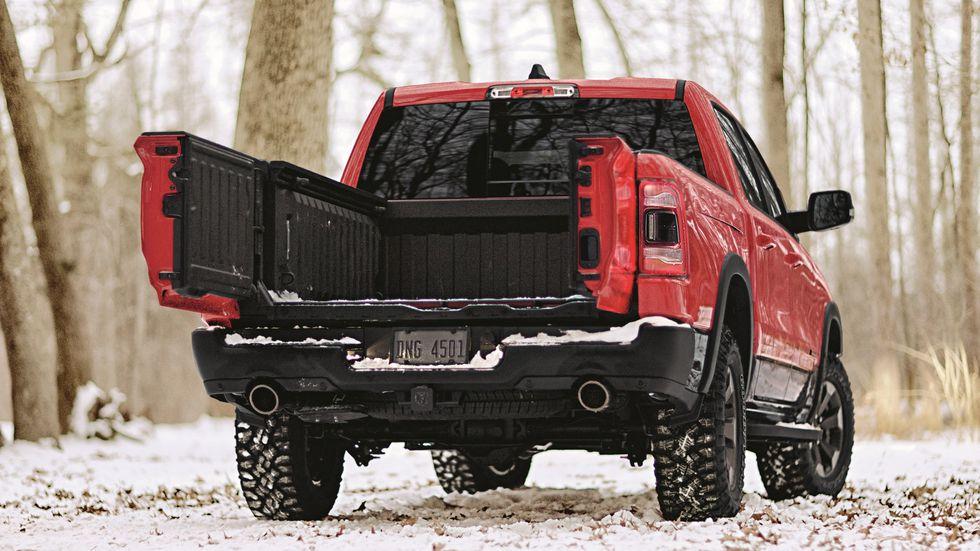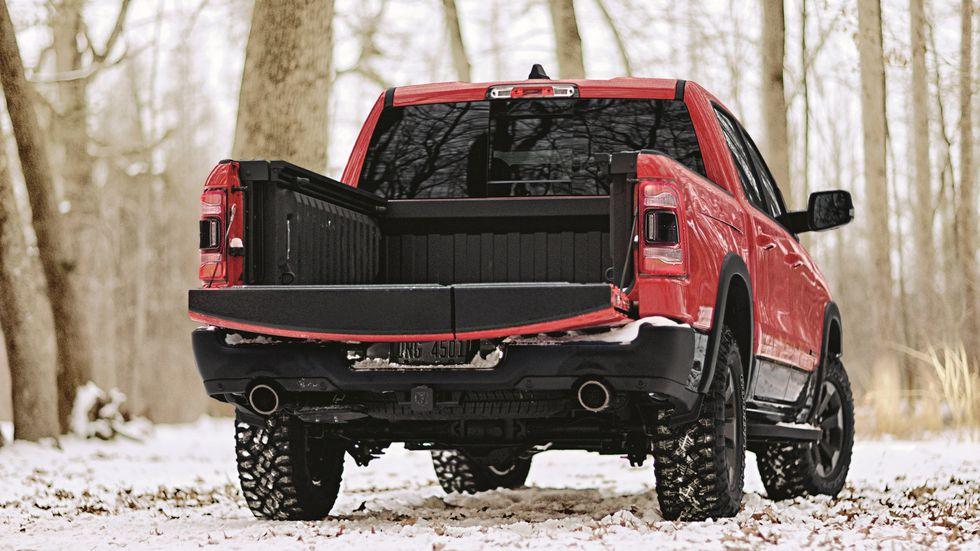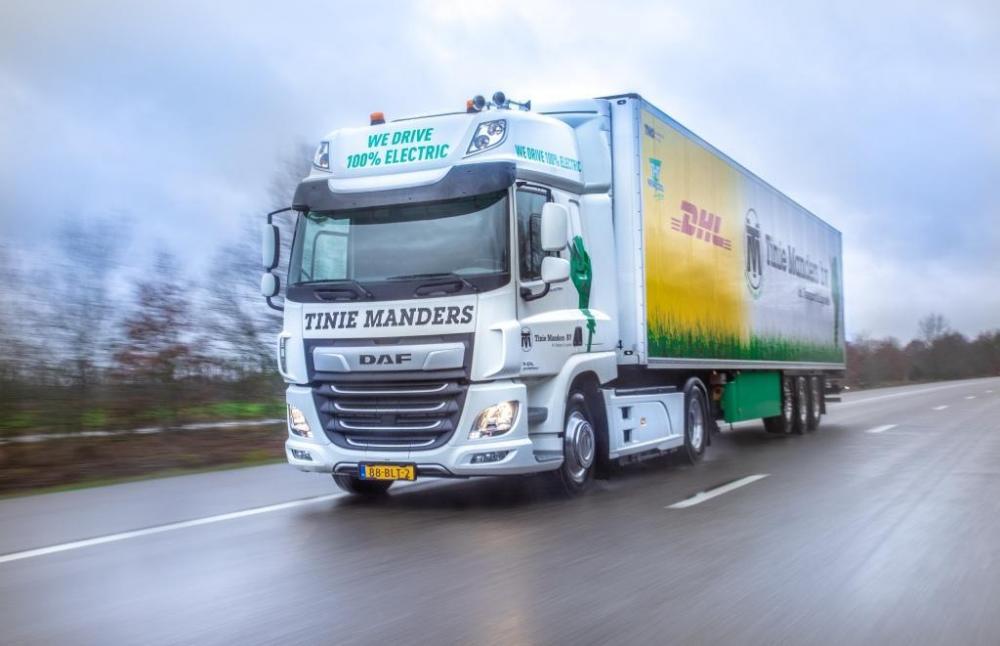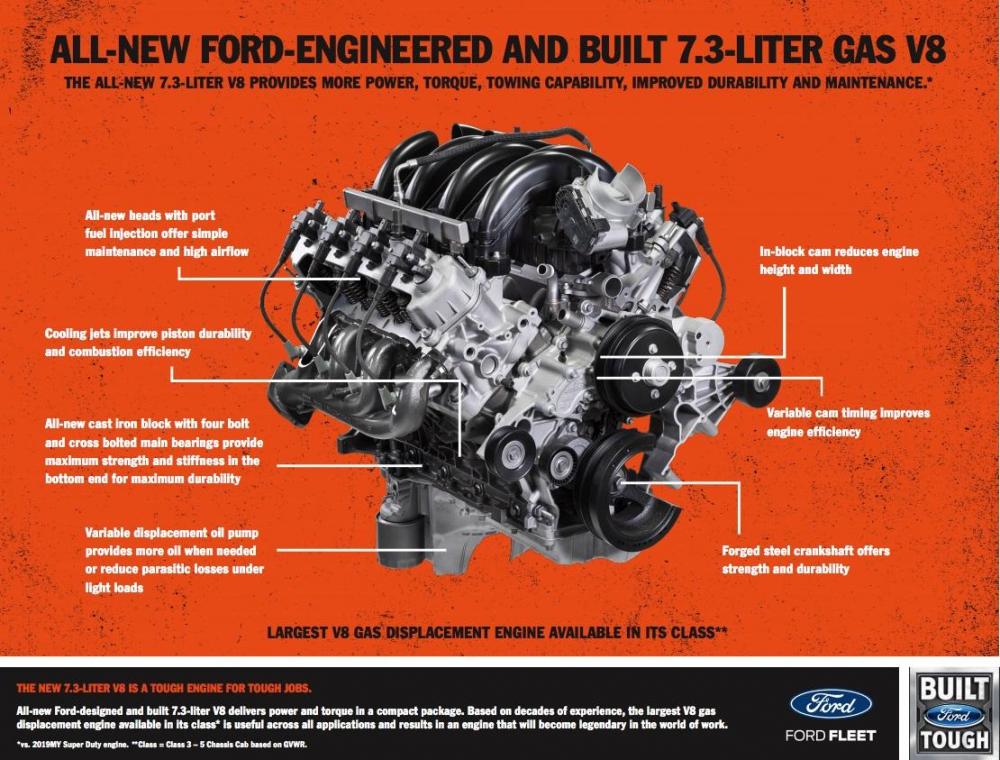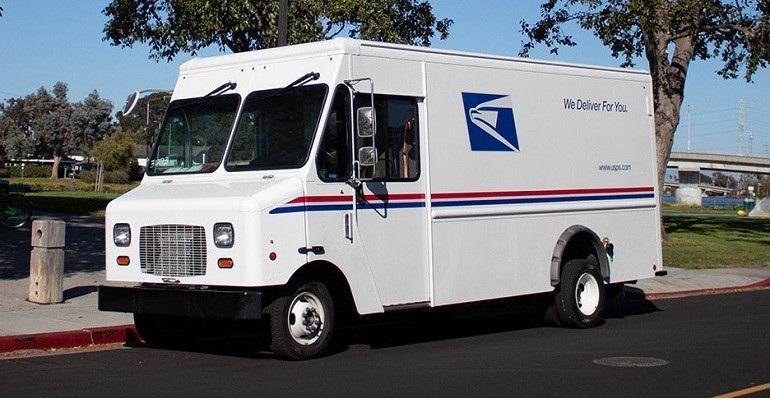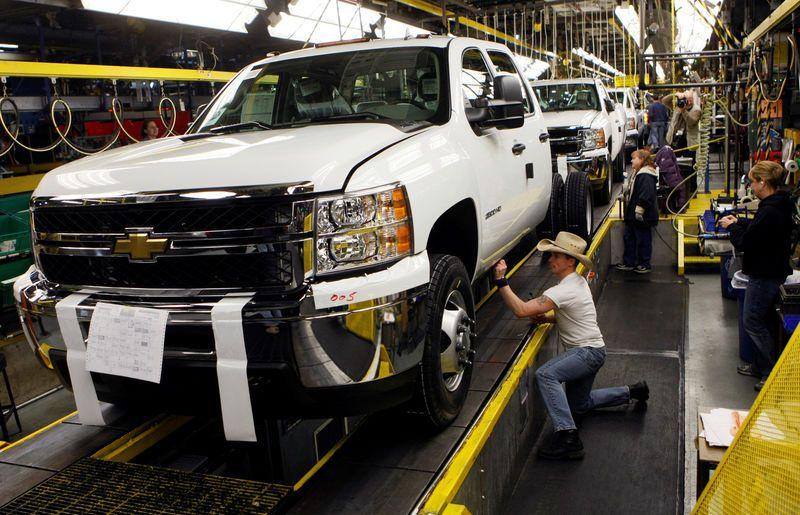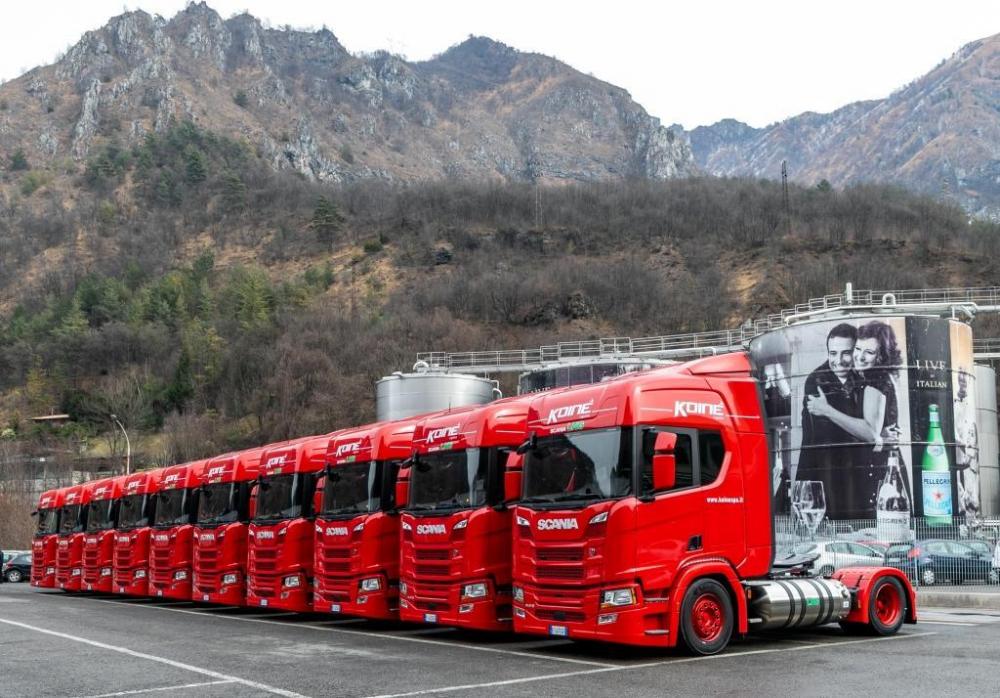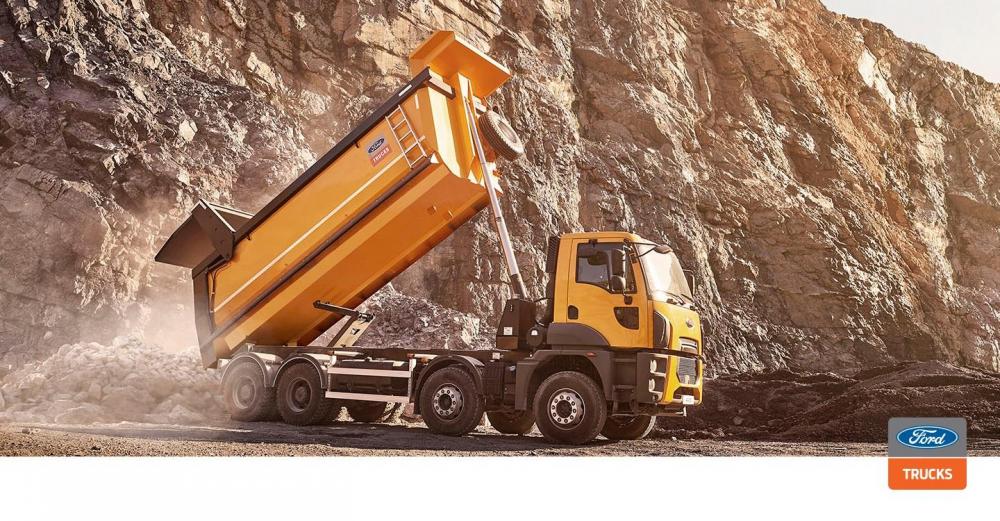
kscarbel2
Moderator-
Posts
18,935 -
Joined
-
Days Won
114
Content Type
Profiles
Forums
Gallery
Events
Blogs
BMT Wiki
Collections
Store
Everything posted by kscarbel2
-
Fiat Chrysler, Bosch agree to pay $66 million in diesel legal fees David Shepardson, Reuters / February 6, 2019 Fiat Chrysler Automobiles NV and Robert Bosch have agreed to pay lawyers representing owners of U.S. diesel vehicles $66 million in fees and costs. In a court filing late on Wednesday in U.S. District Court in San Francisco, lawyer Elizabeth Cabraser said after negotiations overseen by court-appointed settlement master Ken Feinberg, the companies agreed not to oppose an award of $59 million in attorneys’ fees and $7 million in costs. The lawyers had originally sought up to $106.5 million in fees and costs. Under a settlement announced last month, Fiat Chrysler and Bosch, which provided emissions control software for the Fiat Chrysler vehicles, will give 104,000 diesel owners up to $307.5 million or about $2,800 per vehicle for diesel software updates. The legal fees are on top of those costs. Fiat Chrysler is paying up to $280 million, or 90 percent of the settlement costs, and Bosch is paying $27.5 million, or 10 percent. The companies are expected to divide the attorney costs under the same formula, meaning Fiat Chrysler will pay $60 million and Bosch $6 million. U.S. District Judge Edward Chen must still approve the legal fees. He has set a May 3 hearing on a motion to grant final approval. The Italian-American automaker on Jan. 10 announced it settled with the U.S. Justice Department, California and diesel owners over civil claims that it used illegal software that produced false results on diesel-emissions tests. Fiat Chrysler previously estimated the value of the settlements at about $800 million. Fiat Chrysler is also paying $311 million in total civil penalties and issuing extended warranties worth $105 million, among other costs. The settlement covers 104,000 Ram 1500 and Jeep Grand Cherokee diesels from the model years 2014 to 2016. In addition, Fiat Chrysler will pay $72.5 million for state civil penalties and $33.5 million to California to offset excess emissions and consumer claims. The hefty penalty was the latest fallout from the U.S. government’s stepped-up enforcement of vehicle emissions rules after Volkswagen AG admitted in September 2015 to intentionally evading emissions rules. The Justice Department has a pending criminal investigation against Fiat Chrysler.
-
Trailer-Body Builders / February 6, 2019 Stevens Transport, a national multi-modal truckload carrier whose companies include the Stevens Tanker Division, recently purchased $165 million in new equipment for 2019. A total of 1,600 new trucks and trailers will be delivered throughout the year, the company said, demonstrating its commitment to having “the safest, most cutting-edge equipment on the road to continually better serve its customers and enhance the lives of its drivers.” “We set the highest standards for maintaining the newest fleet on the road as we transport meat, produce and other refrigerated commodities to our customers,” said Clay Aaron, president of Stevens Transport. “Having the newest, state-of-the-art equipment increases our already impeccable reputation for reliability and on-time delivery as it reduces the incidence of breakdowns, as well as optimizes fuel efficiency.” The new equipment purchase of 950 automatic trucks includes 500 Kenworth T680s, 250 Peterbilt 579s and 200 Freightliner Cascadias. The 650 new trailers include 450 Utility Trailer 3000Rs and 200 Pneumatic Trailers for Stevens Tanker. In addition, 500 Thermo King units and 750 auxiliary power units have been ordered. The equipment will be delivered and distributed throughout 2019, and will cycle out and replace approximately 25% of the current fleet. “Stevens is a 100% Utility fleet, and the Aaron family and the Bennett family have a long-standing, valued relationship,” said Dave Wallace, director of sales for Utility Trailer. “The market today is extremely hot for trailer demand. We plan our production schedule each year based on Stevens Transport’s purchase to ensure we have the proper production planning for what they require. “We are honored to have 100% of their business for many years.” Stevens Transport said its mission is to hire and retain top-quality drivers and provide them with the safest, best equipment on the market with cutting-edge technology. “Our drivers are our most valuable asset and are integral to our success with our customers,” Aaron said. “We take great pride in providing them with brand new equipment and appreciate their dedication to our company.” Bob Bowden, vice president of regional sales in Texas for MHC Kenworth, said they supply about 62% of Stevens’ truck fleet. “Stevens schedules replacement of vehicles at a certain point of wear and tear, averaging about 3.5-4 years, and they are religious about cycling out older equipment,” Bowden said. “We … have been working with them for the past 33 years. Stevens wants only the best—the best in safety features like collision mitigation, anti-rollover, anti-jack knife and lane departure warnings. They know the best premium trucks attract the best drivers and get the best fuel economy.” .
-
Reason 127 - Why medicine costs many times more in the U.S.
kscarbel2 replied to kscarbel2's topic in Odds and Ends
Facing crackdown in Canada, drugmakers offered billions in price cuts Reuters / February 6, 2019 TORONTO - Canadian pharmaceutical industry lobby groups, in an effort to head off a planned crackdown on prescription drug prices, offered to give up C$8.6 billion (US$6.6 billion) in revenue over 10 years, freeze prices or reduce the cost of treating rare diseases, according to interviews and documents seen by Reuters. Those industry offers did not impress federal officials, coming last year as Canada prepared to expand the powers of a little-known federal watchdog called the Patented Medicine Prices Review Board (PMPRB) to reduce the cost of prescription drugs. The government proposals would change the countries Canada compares its prices to, dropping the United States where they are highest, and set a formula to assess cost-effectiveness of medicines. Announced in 2017, the new rules were scheduled to come into effect last month but have been delayed as the government reviews feedback, which has some wondering if they will ever be implemented. The delay is a setback for supporters of the changes. But documents detailing counter offers from lobby groups Innovative Medicines Canada and BIOTECanada show an industry struggling to win over federal officials. Unlike other countries with universal healthcare, Canada’s government-funded healthcare system does not cover prescription drugs. Most Canadians rely on an expensive patchwork of public and private insurance plans for that. Among industrialized nations, only the United States and Switzerland spend more on prescriptions per capita. Declan Hamill, a vice president at Innovative Medicines Canada, said the proposed regulations go too far and could hurt patient access to new drugs in Canada. But his group recognizes that the Canadian government wants to make drugs more affordable, he said. “We’d like to help the government out with that, and we’ve been trying to have discussions with them,” Hamill said. Lower prices in Canada could eventually hit drugmakers in the most lucrative U.S. market, as Washington evaluates a proposal to base drug prices paid under the government’s Medicare program on the cost of medicines in other developed nations, including Canada. Global drugmakers, including Johnson & Johnson, Merck & Co, Amgen Inc and others, have argued against the Canadian proposal. They referred questions back to Innovative Medicines Canada. With major drugmakers united in their condemnation of proposed regulations to rein in prices, Health Canada hired former Bank of Canada governor David Dodge and health economist Åke Blomqvist to assess the government proposal. Their review, completed in August 2018, broadly endorsed the government’s plan, documents seen by Reuters showed. Prime Minister Justin Trudeau’s senior ministers will eventually decide how to proceed. PMPRB Executive Director Douglas Clark told Reuters the new regime could be running by early 2020. “People have a tendency to presume that the sky is falling,” Clark said. “I think it’s a little early for people to panic and lament the demise of this policy initiative.” Health Canada said the industry’s offers do not address drug price problems created by outdated rules. “The non-regulatory counter-proposals that Innovative Medicines Canada and BIOTECanada jointly submitted to the government would not achieve the goal of ensuring appropriate consumer protection in these circumstances,” the ministry said in an emailed statement. One offer was to “secure a price reduction target of C$8.6 billion” in net present value terms, according to a letter from officials seen by Reuters. Hamill said the C$8.6 billion figure was borrowed from a government estimate of how much the PMPRB reforms would reduce revenue and would have been spread over 10 years. He did not say exactly how it would have worked. Total patented medicine sales were C$16.8 billion ($12.8 billion) in 2017, according to the PMPRB. Health Canada also rejected an offer to freeze prescription drug prices, saying it would not meet its objective of lowering prices. Health Canada said the industry had also committed to improving access for patients with rare diseases, but that proposal would not help those who have drug plans. Meanwhile, ahead of a fall election, Trudeau’s government is preparing to announce a limited expansion of the nation’s universal healthcare system to cover part of the cost of prescription medicines, as drug plans grapple with the extremely high cost of newer specialty drugs. The PMPRB caps prices of drugs still under patent protection. If new regulations are adopted, it would change the list of countries whose drug pricing it uses to decide whether costs are excessive, dropping the United States and adding countries with lower prices. The regulator would also consider for the first time a type of value-based pricing, measuring how cost-effective drugs are in terms of quality-adjusted life years, and force drug companies to privately disclose some confidential discounts. -
GM posts $2 billion Q4 net profit on strong North American results Michael Wayland, Automotive News / February 6, 2019 DETROIT — General Motors swung to fourth-quarter net income of just over $2 billion, as strong North American results offset restructuring costs and losses in its international operations and autonomous-vehicle unit. The fourth-quarter results compare to a year ago when the company reported a record operating profit of $3.1 billion for the period but a net loss of $4.9 billion due primarily to U.S. tax reform. Those results were based on continuing operations, after the company's sale of its European operations. The company spent $1.3 billion on its ongoing restructuring in the fourth quarter, primarily employee separation charges and accelerated depreciation. GM, according to CFO Dhivya Suryadevara, expects to spend roughly $2 billion in cash overall for such actions. For the year, net income swung to about $8 billion, from a loss of $3.9 billion in 2017. GM shares rose on the report, gaining 1.25 percent to $39.79 in midday trading. The shares earlier in the day had topped $40. In the fourth quarter, GM's adjusted earnings, before interest and taxes, decreased 8.3 percent to $2.8 billion, and its global margin declined 0.8 percentage point to 7.4 percent. Revenue increased 1.8 percent to $38.4 billion. For the year, the automaker's adjusted earnings, before interest and taxes, were down 8.3 percent to $11.8 billion from 2017, while income from continuing operations increased to $8.1 billion from $348 million. Strong year Suryadevara described the results as “strong,” despite outside commodity pressures, foreign exchange challenges and a volatile trade and political environment. GM, she said, was negatively impacted more than $1 billion due to changes in trade in 2018, however was primarily able to offset those costs. The first quarter of this year, according to Suryadevara, is expected to be the weakest for GM. That includes an expected 25,000-unit loss to its full-size SUVs – primarily in the first quarter – due to downtime at its Arlington Assembly plant for retooling for the next-generations of the vehicles in 2020. GM last month advised that it would exceed its previously reported guidance of adjusted earnings $5.80 to $6.20 per share and automotive free cash flow of $4 billion. It delivered on that promise. For the year, GM reported earnings of $6.54 per share, including $1.43 in the fourth quarter – topping Wall Street estimates of $1.25. The company's free cash flow was $4.4 billion for the year, excluding the impact of an expected $600 million payment to non-U.S. pensions in the third quarter. For 2019, GM previously forecasted earnings of $6.50 to $7 per share and adjusted free cash flow between $4.5 billion and $6 billion. “We are really repositioning this company from one that was trying to be all things to all people in all markets to a very strategic, agile and profitability company and we believe we are in a very differentiated position than many of the competitors in this industry,” Barra told investors. Additional headwinds hindering its results for the year could include a flat to lower market in China and a potential contentious collective bargaining with the UAW in the second half of the year. Regional results North American earnings increased 5.8 percent to $3 billion in the fourth quarter. GM on Feb. 22 expects to pay up to $10,750 in profit sharing payments based on North American earnings to UAW members, down $1,000 from $11,750 in 2017. The company's international operations lost $48 million, down from earnings of $416 million in 2017. GM Financial reported earnings of $416 million, up 38 percent from $301 million a year earlier. Fifty-six percent of GM’s sales in the fourth quarter were financed through GM Financial. Operating profit margin: The North American margin for the year was 9.5 percent, including 10.2 percent for the fourth quarter. It was the first time since 2014 that the company’s profit margin for the region dropped below 10 percent.
-
Hmm......the global market Ranger NEVER had any shifter issues. Already engineered and proven, why did Ford feel compelled to gut the global market Ranger and reinvent the wheel ??? I assume engine fires will be next.
-
Ford recalls 3,500 Rangers for shifter problem Michael Martinez, Automotive News / February 6, 2019 DETROIT — Ford Motor Co. is recalling 3,500 Rangers a month after the midsize pickup went on sale. Ford said the shifter that could move out of park while the engine is off, though it's not aware of any accidents or injuries. The vehicles being recalled were built at Ford's Michigan Assembly Plant between June 4 and Jan. 9. Roughly 3,000 of the vehicles are in the U.S., while the remaining 500 were sold in Canada. The automaker said the affected Rangers could contain bezel wiring that interferes with the shifter interlock override, which could lead to the unintended movement. The automaker sold 2,153 Rangers in North America in January, according to the Automotive News Data Center. Kumar Galhotra, Ford's president of North America, said strong demand for the pickup is prompting the company to add "massive overtime" at Michigan Assembly beginning this month. .
-
GM powers up 2020 Silverado HD pickup line Michael Wayland, February 5, 2019 FLINT, Mich. — General Motors is adding size, power and options to the redesigned 2020 Silverado HD pickup. The vehicles, when they arrive in showrooms midyear, will be available in five trim levels — Work Truck, Custom, LT, LTZ and High Country — across 22 cab, bed, chassis and driveline configurations. They, like their GMC Sierra HD siblings, will be available with two new powertrains. The standard engine is a new 6.6-liter gasoline V-8 with direct injection making 401 hp and 464 pound-feet of torque mated to a six-speed automatic transmission. That's an 11 percent increase in horsepower and a 22 percent increase in peak torque, respectively, resulting in 18 percent more towing capability —17,400 pounds — according to GM. It replaces a 6.0-liter gasoline V-8 that delivered 360 hp and 380 pound-feet of torque. The optional engine is a 6.6-liter diesel V-8 rated at 445 hp and 910 pound-feet of torque coupled with a 10-speed automatic transmission co-developed with Allison. The diesel model, combined with additional upgrades, boosts max towing 52 percent — now up to 35,500 pounds on Regular Cab, two-wheel drive, dually rear-wheel models. The performance details from GM come as crosstown rival, Ford Motor Co., said it expects its 2020 Super Duty trucks with a new 7.3-liter engine to be the most powerful gasoline V-8 in its class. The optional engine is in addition to Ford already offering a 6.7-liter Power Stroke diesel and a standard 6.2-liter V-8. The 2020 Silverado HD, according to GM, is 10.4 inches longer than the outgoing truck, 1.4 inches wider and 1.6 inches taller. Its wheelbase also is 5.2 inches longer. .
-
The 2019 Ram 1500 Pickup Now Has a Trick Tailgate of Its Own Joey Capparella, Car & Driver / February 6, 2019 A new Multifunction Tailgate option has 60/40 clamshell doors in an attempt to compete with GMC's MultiPro tailgate. GMC is busy touting its new Sierra 1500 pickup's MultiPro tailgate option that flips and folds in several different ways; it's the centerpiece of the company's new marketing campaign, in fact. But when one of the domestic full-size trucks does something, it's a sure bet that the others will be hot on its heels. Hence a good reason why the new Ram 1500 is now adding a trick tailgate of its own called the Multifunction Tailgate that will soon be available as an option on all 2019 Ram 1500 models. The Ram takes a different approach than the GMC, splitting the tailgate horizontally into hinged 60/40 sections that can swing out, clamshell style, when the tailgate is raised. Each door can be opened individually up to 88 degrees. The tailgate lowers normally in a single piece, has the same damped action as the regular Ram's tailgate, can be operated by remote, and can accommodate a 2000-pound load when lowered. Ram also notes that the tailgate can execute all of its functions even when a trailer is attached. It weighs around 75 pounds more than a standard tailgate, according to Ram. Opting for the Multifunction Tailgate will cost $995 on any trim level—as opposed to the GMC, which only offers its fancy tailgate on upper trim levels—and it comes with a spray-in bedliner, ordinarily an extra-cost option. It can also be paired with an optional $295 retractable center step to aid access into the bed. Ram says it's possible to retrofit the new tailgate to an existing 2019 1500 truck, but because it would require replacing the box in addition to the tailgate, it's an impractical proposition likely to cost several thousand dollars (stand-alone beds for the old Ram cost upward of $4000). Pickups with the new tailgate option will be available at dealerships starting in late spring 2019. .
-
Bob, I think it's noteworthy that the F-550 was left out of the party. Who doesn't think Super-Duty includes F-250 thru F-550, based on marketing to date? Is the F-550 going to be matched with the F-650 and F-750 from now on?
-
DAF Trucks Press Release / February 5, 2019 DAF Trucks has delivered a fully electric truck to Tinie Manders Transport in Geldrop, the Netherlands. The DAF CF Electric featuring E-Power Technology from VDL is used on behalf of DHL for shuttle services in the Eindhoven region. The first CF Electric was put into operation last December by supermarket chain Jumbo. Jos Habets, Director Operations and member of the Board of Management at DAF Trucks, handed over the key of the CF Electric to the management team of Manders Transport. The 83-year-old family business, based in the Brabant region of the Netherlands, is currently under the leadership of the 3rd generation. The truck joins the company's 50 tractors large fleet. Electric trucks for urban areas "It is clear that the transport sector is on the cusp of a major transformation", says Jos Habets. "The electric truck is set to become the norm in more and more urban areas in future. I am extremely proud that we are now in a position to broaden our experience with electric trucks in collaboration with Tinie Manders Transport. The data that we collect about both the technology and the operational deployment will feed into the specifications for the final production models, thus ensuring that they fit seamlessly with the requirements of the market." Zero emissions "We are very proud to be one of the first to drive this pioneering DAF", states Eveline Manders. "We have been involved in its development from the outset and we are, of course, curious to see the results in practice. Our decision as to whether to expand the range of electric vehicles within our company will be based not only on the zero emissions factor, but also on the ease of use and the additional possibilities that this truck offers us. Zero emissions combined with the minimal noise levels of the truck mean that we can also meet the increasingly stringent legal requirements for inner city transport, thereby enabling us to set ourselves apart from the competition." Important step Willem van der Leegte, President and CEO of VDL Groep, had the following to add: "Tinie Manders, DAF Trucks and VDL all boast a strong foundation, a thorough approach and top-quality innovation. It is truly wonderful to see three companies from the Brabant region come together in this way to test the DAF CF Electric featuring VDL E-Power in practice. Tinie Manders had the confidence to stick its neck out, getting in contact straight away to express interest in participating in the testing phase for this development project. As a result, the family business has played an important role in the creation of this innovative vehicle, which offers the world progress in terms of achieving sustainability in goods transport." Collaboration Tinie Manders Transport will combine the fully electric truck with a fully electric refrigerated trailer. This unique combination made the Geldrop-based transporter eligible for the Dutch DKTI subsidy for sustainable transport. This DKTI project not only involves DAF, VDL Groep and Tinie Manders Transport, but also DHL, TNO, Allego, THT New Cool and the municipality of Geldrop-Mierlo. Allego provides a public charging solution in Geldrop, the municipality is involved in the implementation of the charging infrastructure and THT New Cool is supplying two electrically cooled, zero-emissions trailers, in which energy is recovered during braking. Finally, TNO will examine the results achieved by the electric truck/trailer combination and assess whether more regional transport could be carried out using fully electric vehicles. About the DAF CF Electric The DAF CF Electric is a 4x2 truck unit developed for road haulage of up to 37 tonnes in urban areas, for which single-axle or dual-axle trailers are the norm. The vehicle is based on the DAF CF—named 'International Truck of the Year 2018'—and is operated fully electrically using VDL's E-Power Technology. The core of this intelligent powertrain is a 210-kW electric motor powered by a lithium-ion battery pack with a current total capacity of 144 kWh. The CF Electric has a range of approximately 100 kilometres, depending on the weight of its cargo, making it suitable for high-volume transport in the urban distribution market. The batteries have a 30-minute quick-charge feature and a full charge takes just one and a half hours. DAF CF Electric — Technical specifications Truck weight 9,700 kg Electric motor 210 kW Torque 2,000 Nm Battery capacity 170 kWh Range of fully charged vehicle up to 100 km Battery quick-charge 30 minutes Full charge 1.5 hours .
-
Motiv Power delivering all-electric step vans to USPS Trailer-Body Builders / February 5, 2019 Motiv Power Systems, a provider of all-electric medium duty fleet chassis, recently began delivering Ford E-450-based all-electric step vans to the United States Postal Service (USPS). Compared to their combustion engine-powered counterparts, Motiv says its all-electric EPIC chassis-equipped mail delivery vans are expected to curtail fuel and maintenance costs, resulting in a reduction of total cost of ownership. The pilot program of seven Motiv-powered vans is slated for deployment in California’s Central Valley. The first vehicle now serves routes in Fresno, with the balance of the vehicles to be deployed in Fresno and Stockton as part of a year-long program. Most of the immediate project benefits are aimed for the San Joaquin Valley, an economically disadvantaged area with some of the highest pollution burdens in the country, as evidenced by CalEnviroScreen scores within the worst 5% in the state. USPS has a history of testing electric vehicles for city delivery. The first known test of an electric vehicle for mail collection was in Buffalo NY on July 2, 1899. Since 2001, the USPS has operated 30 electric 2-ton vehicles on the streets of New York City, and these were later joined by a pair of 2-ton hybrid electric vehicles in Long Island. “We’re proud to now be a part of USPS’ long tradition of implementing the latest technology to green their fleet,” said Jim Castelaz, Motiv CEO. “Our all-electric EPIC chassis have accumulated 500,000 real-world miles and are ideally suited to the USPS vehicle route characteristics. We’re thrilled that USPS has chosen Motiv to help meet their sustainability goals.” USPS’ acquisition of the Motiv chassis-powered vans was developed as a partnership by CALSTART and the San Joaquin Clean Transportation Center and funded through a California Air Resources Board (CARB) award to the San Joaquin Air Quality Control. The funds are meant to provide an incentive to Californian fleets to adopt the cleanest emerging technologies and continue to advance California’s Air Quality and Climate goals. The acquisition was made possible by California Climate Investments, a statewide program that puts billions of cap-and-trade dollars to work reducing greenhouse gas emissions, strengthening the economy and improving public health and the environment, particularly in disadvantaged communities. The cap-and-trade program also creates a financial incentive for industries to invest in clean technologies and develop innovative ways to reduce pollution. .
-
I have to disagree. Tyson was very pleased with their Ford HN80s, and many die-hard Ford fleets chased the HN80's trail and bought Sterlings....and still operate them today with a sense of pride.....as if they were Fords.
-
Fiat Chrysler recalls 882,000 pickup trucks for steering, pedal issues David Shepardson, Reuters / February 5, 2019 WASHINGTON -- Fiat Chrysler Automobiles said on Tuesday it would recall 882,000 pickup trucks worldwide in two new recalls to address steering and pedal issues. The Italian-American automaker said it was recalling about 660,000 heavy duty Ram 2500 and 3500 pickup trucks from the 2013 through 2017 model years, including 574,000 in the United States, as drivers could potentially experience steering loss. A nut could come loose and prevent drivers from being able to steer the vehicle, Fiat Chrysler said, adding it had reports of one injury and eight accidents possibly related to the issue. The company will also recall 222,000 2019 Ram 1500 pickup trucks worldwide to better secure brake pedals while the vehicles’ adjustable-pedal feature is in use. The brake pedal could get detached if drivers move pedals to the rear-most position, the company said. That could be dangerous if trucks are traveling at highway speeds. Last month, Fiat Chrysler recalled about 180,000 2019 Ram 1500 pickups to tighten a fastener linked to reports of power-steering loss. Fiat Chrysler said the issue could lead to steering problems.
-
B model Mack gas engine parts
kscarbel2 replied to underdog663's topic in Antique and Classic Mack Trucks General Discussion
Doesn't Matt Pfahl (Pfahl Mack Restorations) have them? Or you can call the fine folks at Watt's Mack. 126SB127C - Complete gasket set for EN and ENF 707A and 707B engines 553GB3266B - head gasket (individual) EN707 with 20 studs 3029-8213C - head gasket (individual) EN707 with 18 studs -
Reuters / February 5, 2019 Volkswagen is in talks with Swedish institutional investors AMF, AP Fund 1 and 4, Investor AB and Folksam about being cornerstone shareholders in the dual listing of its trucks unit Traton in Stockholm and Frankfurt. The discussions could result in more than one cornerstone investor being brought on board and are for each investor to take a 150 million to 300 million euro ($171.21-$342.42 million) stake. Cornerstone investors are institutions that are invited to subscribe to shares ahead of an IPO to boost its popularity and often serve as a seal of approval for other investors. Securing such investors is popular among Nordic companies. Första AP-fonden (AP1) had been asked about being anchor investors, its head of equities Olof Jonasson said. He declined to comment on stake size and price. “We have been approached but I couldn’t really tell you anything about the details... Our interest... would be about business potential and valuation and all those things put together,” said Jonasson, whose fund is also a large owner of Swedish rival AB Volvo. VW expects to sell shares worth 5 billion-6 billion euros ($5.7-$6.9 billion) in an April listing that could value Traton about 20 billion-25 billion euros. At this size and value, the IPO could potentially become Germany’s and Sweden’s biggest new share offering in 2019, but the sources said its size had not yet been finalised and would depend on market conditions. AP4 head of equities Per Colleen said he could not confirm any of the details but added: “Anything of that size, we will have a serious look at”. AMF, Investor AB, Folksam, Volkswagen and Traton did not immediately respond to requests for comment. Traton is the umbrella name for MAN, Scania and VW brands, but Swedish company Scania is by far its most valuable part, with superior profitability and stability. Scania was listed in Stockholm until 2014, when its then largest investor VW took it private in a deal that valued it at about 17.9 billion euros, but many Swedish investors that were squeezed out said then that the offer undervalued the group. Swedish funds were keen for a substantial stake in the Traton IPO as they expected it to have a large influence on the automotive and engineering-heavy Stockholm blue-chip index that they try to outperform.
-
GM truck plant in Michigan to add 1,000 workers Reuters / February 5, 2019 FLINT, Mich. -- General Motors said Tuesday it will add 1,000 workers to build new heavy-duty pickup trucks at its plant in Flint, Michigan, and will give priority to GM workers who were laid off elsewhere. GM has come under fire from U.S. President Donald Trump and Midwestern lawmakers for its plans to stop production at five North American factories and cut up to 15,000 jobs. The automaker has said it is trying to find new jobs for 1,500 U.S. hourly workers at the affected plants. Flint could be a haven for many of these employees. Sales of heavy-duty pickups in the United States have grown to more than 600,000 vehicles a year, up more than 20 percent since 2013, according to industry data. Prices for luxury models can easily top $70,000. GM on Tuesday will celebrate the launch of a new generation of heavy-duty GMC and Chevrolet pickups at the assembly plant in Flint, Michigan, that is now building all such trucks for the company. .
-
Scania Group Press Release / February 4, 2019 With the delivery of Scania R 410 liquified gas trucks, all of Gruppo Sanpellegrino’s shuttle transports from the mineral water bottling plant at San Pellegrino Terme to its logistics centre at Madone are now operated on gas fuel. Sanpellegrino in 2018 produced 1.5 billion bottles of mineral water, that are exported to more than 150 countries. Growth over the past years has been strong and continues to increase. Sanpellegrino will this spring start construction of a major extension of its production facilities. That means more transports on the narrow winding roads through villages in the Bergamasque Prealp valleys to and from the springs. Each day, there are 300 truck movements to the production plant, around the clock, all days of the week. In view of rising production, Sanpellegrino and its logistics partner Koiné therefore initiated discussions with Scania on finding a more sustainable solution. “These liquified gas trucks constitute an important element in ensuring the continued development of our operations,” says Maura Sartore, Head of Supply Chain South Europe, Nestlé Waters. The group underlines that the introduction of gas trucks forms a part of its sustainability agenda and that it has already cut water consumption by 200,000 cubic metres and that its electricity supply is now fully renewable. “The gas delivery to Sanpellegrino with Koiné once again highlights the importance of pursuing a novel approach in addressing sustainability and acting together to speed up the transition to a sustainable transport system,” says Franco Fenoglio, Managing Director of Italscania. In addition to annual carbon savings of 500 tonnes, the gas engines offer a substantial noise reduction in comparison with diesel engines. Since the company schedules transports during nights to avoid traffic congestion on route to Madone, 35 km from the springs, this has been a major consideration. Of the annual 80,000 trucks that arrive at San Pellegrino, 75 percent drive to the logistics centre. “Sanpellegrino is a major employer here and our residents are happy with the fact the it is expanding operations and generating more employment,” says Mayor Giuliano Ghisalberi, Zogno Municipality. “At the same time, there has been concern about increased traffic, noise and pollution. We are therefore extremely pleased with the introduction of gas trucks.” Koiné has in total taken delivery of 50 Scania R 410 liquified gas trucks, most of which will be used in operations for Sanpellegrino. Interest in using liquified gas in heavy truck operations in Italy is rapidly rising and there are presently 39 filling stations for liquified natural gas (LNG) in the country with an additional 25 stations under way. .
-
The construction business is tough for beginners
kscarbel2 replied to kscarbel2's topic in Trucking News
Note Ford Truck's proprietary planetary hub reduction drive axles. With the introduction of Ford's proprietary AMT transmission in 2020, the truckmaker will have a vertically integrated drivetrain. -
Ford Trucks International / Sharing The Load At Ford Trucks, we’ve been making rugged construction trucks for over a hundred years. No matter what the job, Ford Trucks are engineered to deliver. Always have been…..Always will be. .
BigMackTrucks.com
BigMackTrucks.com is a support forum for antique, classic and modern Mack Trucks! The forum is owned and maintained by Watt's Truck Center, Inc. an independent, full service Mack dealer. The forums are not affiliated with Mack Trucks, Inc.
Our Vendors and Advertisers
Thank you for your support!


